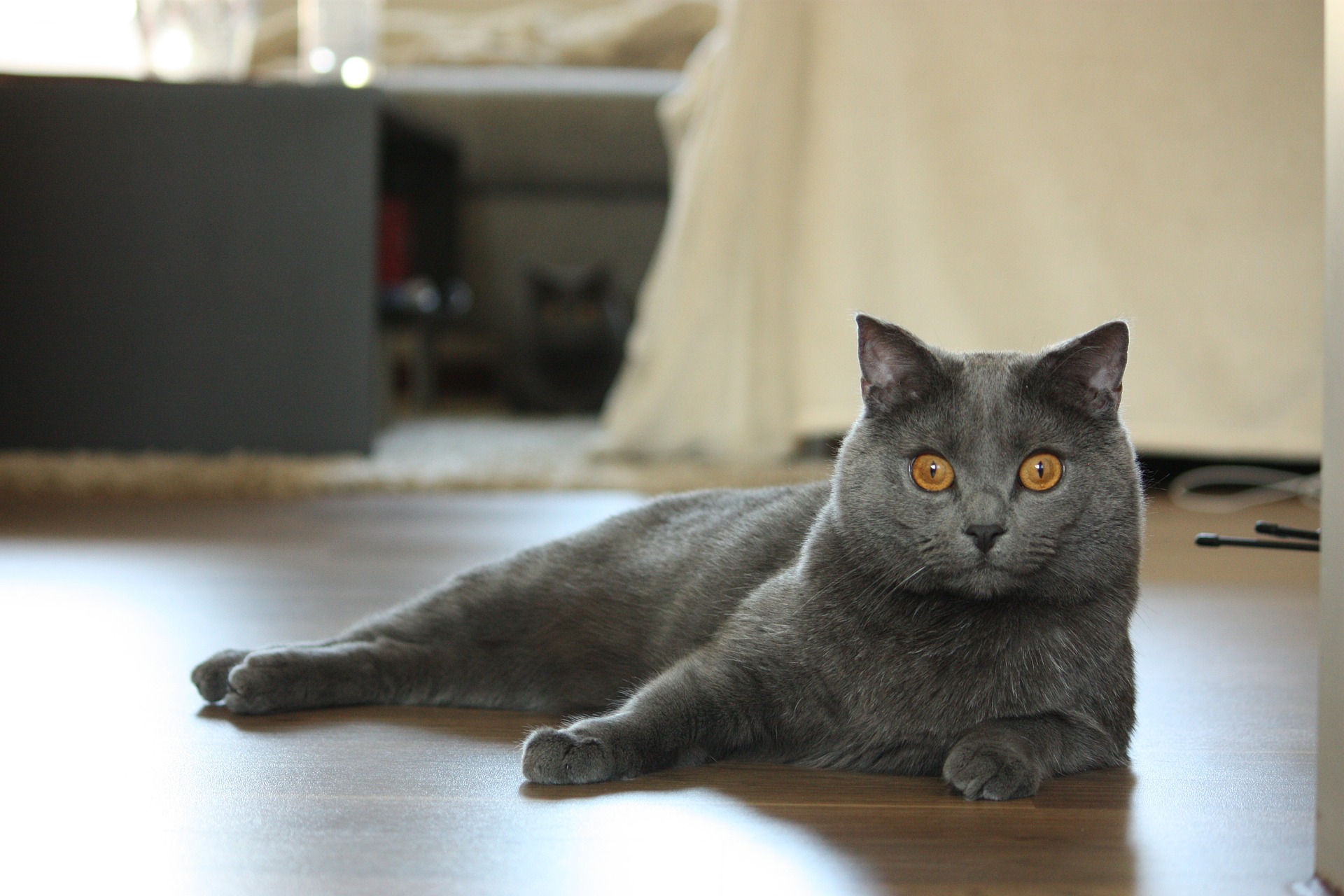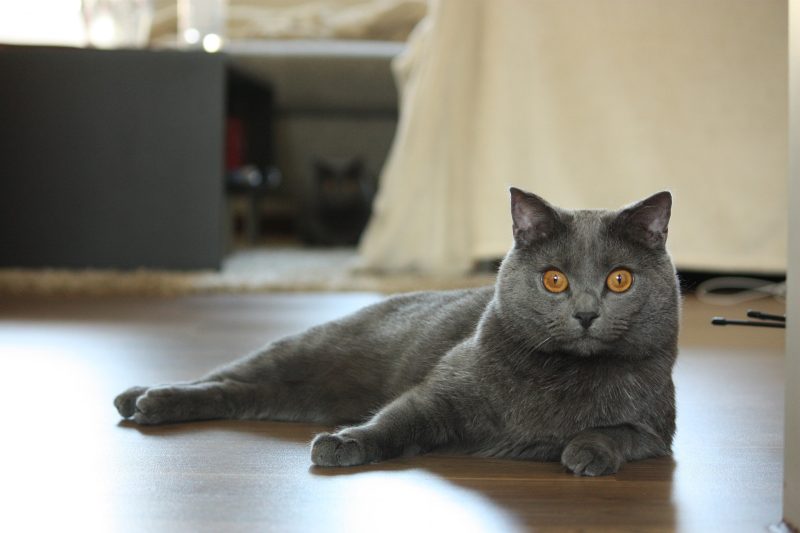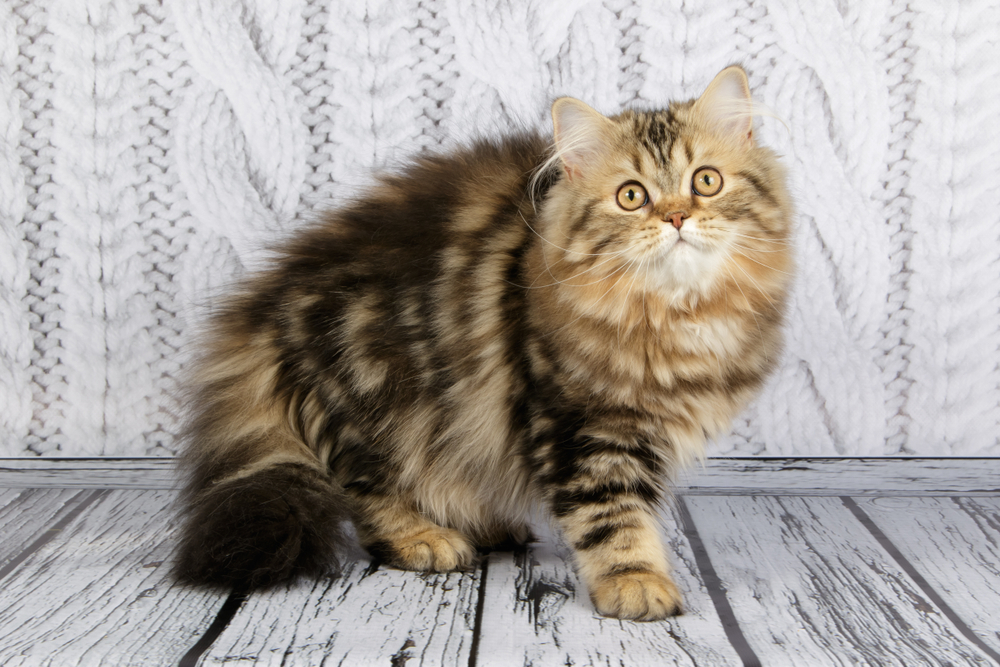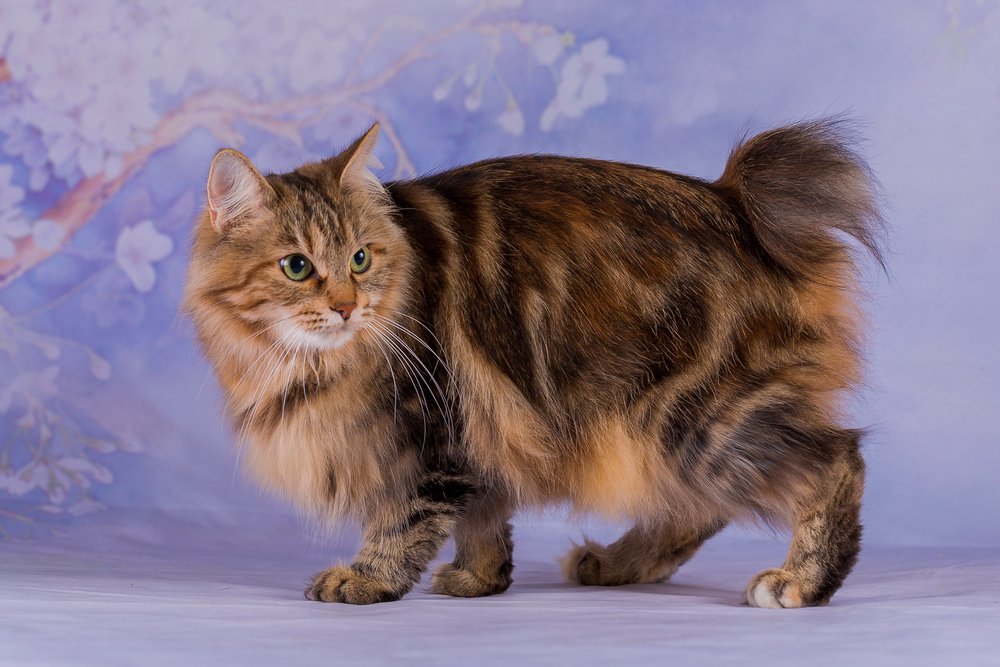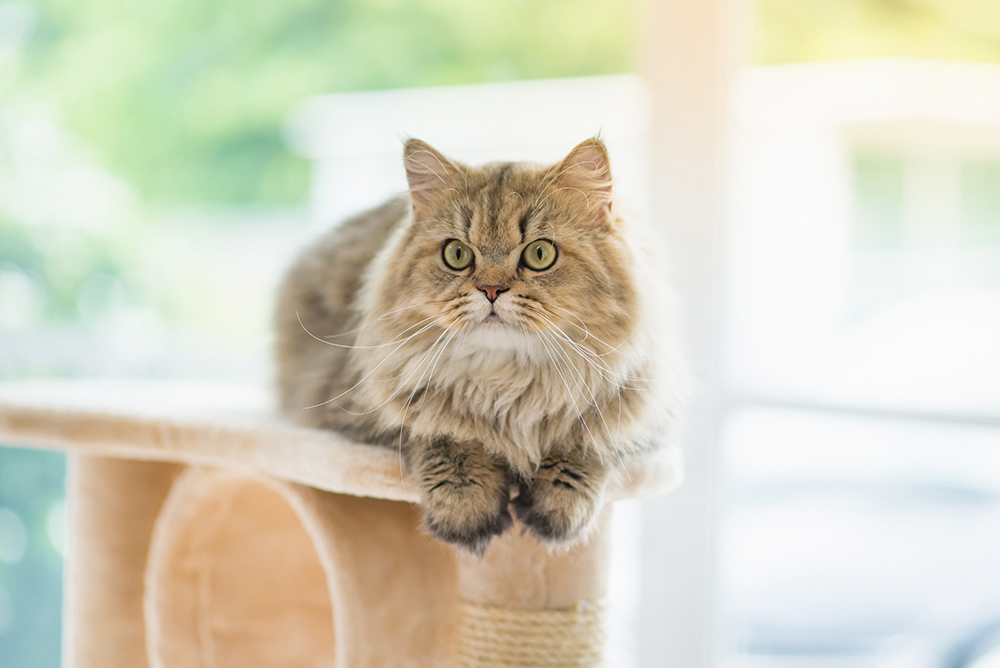Click Below to Skip Ahead
The Chartreux cat has a rich history that began in the countryside of France. This easygoing cat breed does well in a wide variety of different households. Known for being extremely quiet, the Chartreux is thought to have been bred over time to have a distinctive tiny meow. This was done so the cats would not disturb their monk caretakers when they meditated.
This interesting cat breed deserves more attention from cat lovers all over the world. You might be wondering whether the Chartreux is a good pet candidate for your household. Here, we cover everything from their temperament and intelligence to their health and care requirements, so you can get to know the breed better and decide whether you should adopt one of your own.
Breed Overview
Height:
9–11 inches
Weight:
6–9 pounds
Lifespan:
12–16 years
Colors:
Blue, silver-grey
Suitable for:
Singles, small and large families, seniors, and anyone looking for a quiet feline
Temperament:
Loving, docile, friendly
Cute, cuddly, and quiet sums up what the Chartreux cat is all about. This breed’s beautiful blue coat is also enough to melt your heart at first sight. The average Chartreux is high-spirited, intelligent, and docile. This is a generally healthy breed, though they are susceptible to developing a few different conditions. With a lifespan of up to 16 years, a Chartreux comes with the requirement of making a long-term commitment.
Chartreux Cat Characteristics

Chartreux Kittens
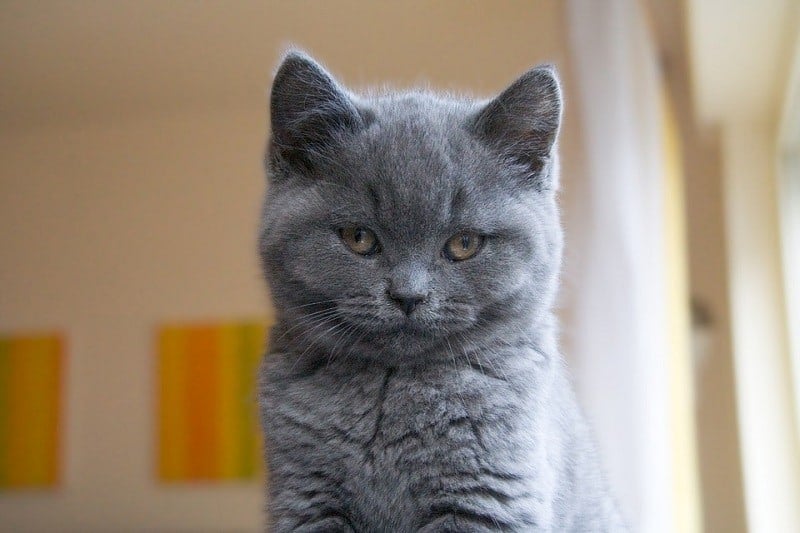
Anyone with an affinity for cats would find it challenging not to instantly fall in love with a Chartreux kitten. These adorable blue cats are soft to the touch and gentle by nature, making interacting and snuggling with them irresistible. Although curious and playful, Chartreux kittens are not particularly active. However, their strong prey drive makes them lovers of exploration and game playing.
Temperament & Intelligence of the Chartreux Cat
The Chartreux cat is an extremely intelligent breed that is excellent at hunting, so they can help keep your home free of mice and other small pests. These cats spent a long time living in the streets, where conditions were harsh, so they tend to be hardy and agile housecats today. For cats with tiny meows, they sure purr mightily when they are happy! This breed adapts easily and makes loyalty to family members a priority.
If you want to get and keep the attention of a Chartreux, all you must do is get a battery-operated toy that moves around on its own. This breed can spend hours on end chasing their toy “prey” around the house. Human-powered toys, like a feather at the end of a string, can also be used to create a fun bonding experience for both of you. These cats have a stubborn side, though, so if they don’t want to play or cuddle with you or provide you with any other kind of attention, they’ll make it clear, and there is not much that you can do about it!
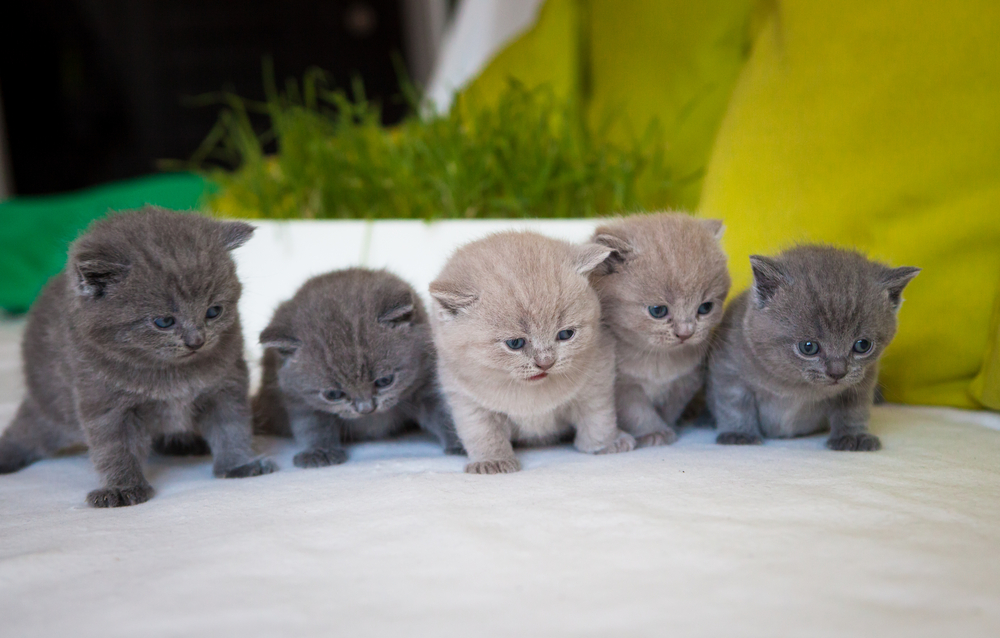
Are These Cats Good for Families? 👪
This cat breed can make an excellent pet for families of all shapes and sizes. Singles and seniors can enjoy their quiet companionship, and families with kids can appreciate their curious and playful side. Due to their adaptable personality, the Chartreux can be happy living in an apartment or a house. All this breed really needs is a warm place to sleep, a clean litter box, food and water, a few toys, and room to explore for optimal happiness.
Does This Breed Get Along With Other Pets? 🐶 😽
The typical Chartreux can get along well with other cats in the house, but they tend to be standoffish and untrusting when it comes to commingling with dogs. As for smaller animals like rabbits and hamsters, a Chartreux is likely to spend much of their time trying to figure out how to “capture” what they would see as prey. As a general rule, it’s best not to house this cat breed with dogs or small “prey” animals.

Things to Know When Owning a Chartreux Cat
It will take a considerable amount of your time, love, and money to properly care for a Chartreux cat. There are several things that you should know about caring for this breed before ultimately deciding whether to adopt one of your own.
Food & Diet Requirements 🐡
This cat breed does not have any special diet requirements that are different from those of most other breeds. Their diet should consist of high-quality dry cat food that has real meat as the first ingredient. Feeding should be based on the product’s instructions or a veterinarian’s recommendations.
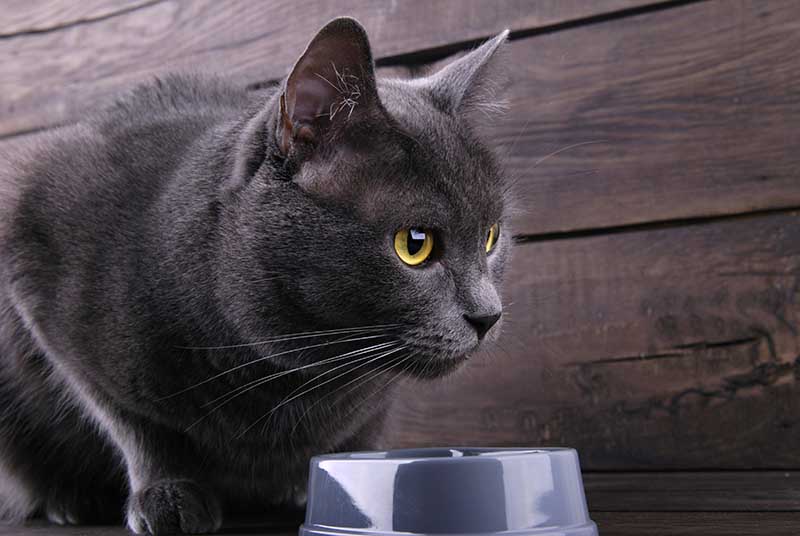
Exercise
The Chartreux cat enjoys exercising in short spurts, as they would do in the wild when hunting down prey. Exercise should come in the form of playing with interactive toys, but your cat will likely also get exercise by following you around the house when you’re active. Puzzle toys can help keep this breed happy and healthy as time goes on too. When they are not playing with toys, exploring the house, or following you around, you will probably find your Chartreux kitty curled up in a corner, snoozing.
Training 🧶
This breed is extremely smart, so they can take well to any training. The average Chartreux can quickly learn how to come when their name is called, chase a toy that is thrown in front of them, and even bring their favorite toy to a family member. There is no need to work to train a Chartreux cat, though. They can learn basic things, like their name, on their own simply by paying attention.
Grooming ✂️
The Chartreux cat’s coat is made up of slightly woolly hair that acts as a waterproof barrier of sorts. They can keep their coat clean, but they do shed moderately, so it’s a good idea to get into the practice of brushing them about once a week throughout the year. They also have a shedding season, which is when their shedding gets more intense, usually during the springtime. This is a good time to increase brushing sessions to two or three times a week.
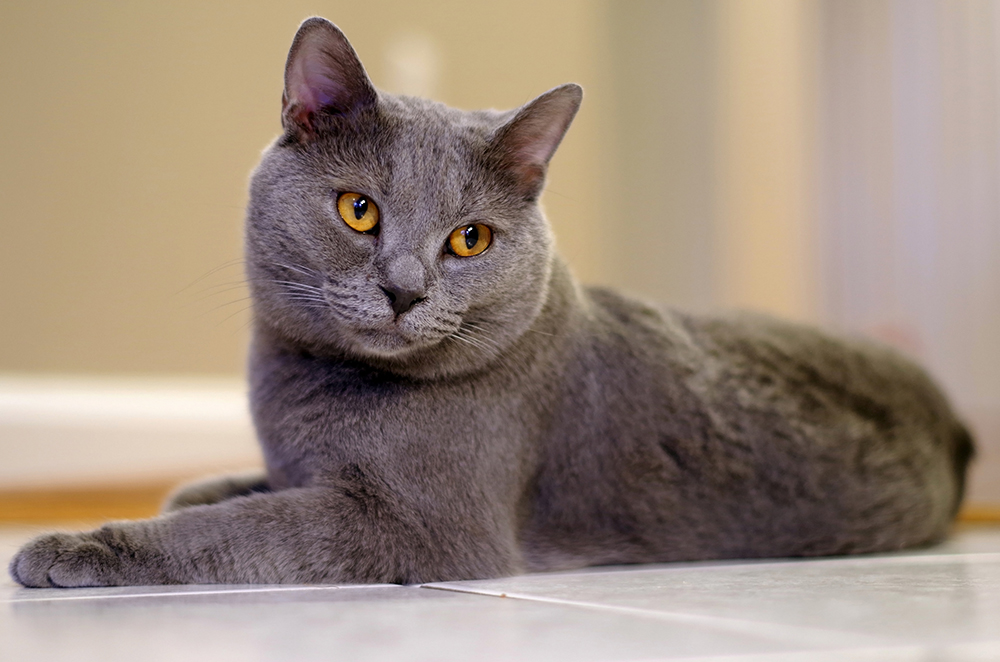
Health and Conditions ❤️
This is a healthy cat breed in general, but some Chartreux cat lines pass down a genetic condition called hereditary patellar luxation. It can make a Chartreux cat’s kneecap come out of its track while they’re walking, running, or playing. There are a few other health conditions that this breed is susceptible to.
- Bacterial infections
- Arthritis
- Limb lameness
- Dental disease

Male vs. Female
Both male and female Chartreux cats have the same basic traits of being affectionate, loyal, and curious. Some males are more active than their female counterparts, and tend to be more devoted to their human family members. But there aren’t enough differences between the sexes to justify choosing one over the other due to temperament, intelligence, or personality. Each cat is unique in their own right and should be judged as such.
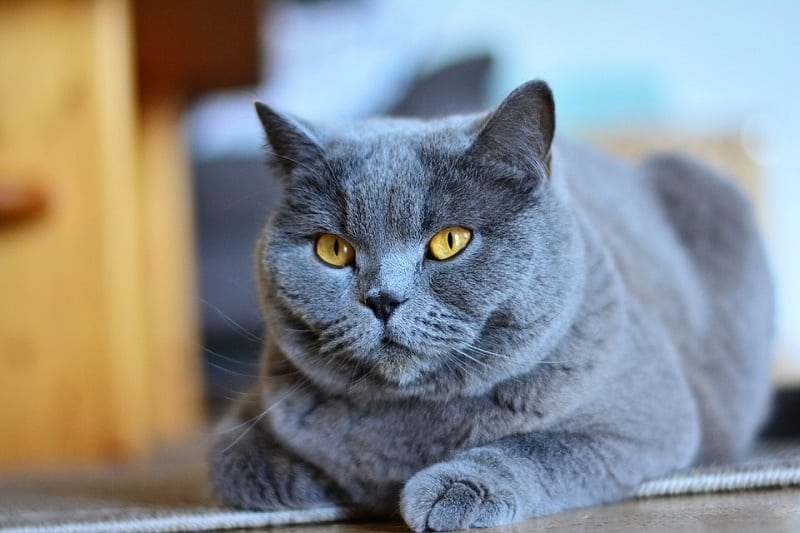
3 Little-Known Facts About the Chartreux Cat
1. This Breed Makes Excellent “Mousers” and “Ratters”
The Chartreux is a renowned hunter, stealthy and agile and always willing to lie in wait for an opportunity to pounce on their prey. These cats have a history of living aboard ships and traveling with traders to help keep rat populations under control. They also lived on the streets, where their sole source of food was rats and other small animals. They have maintained this trait and can help protect homes from mice and rats today.
2. They Are Rumored to Have Been Created by Monks
While it’s almost certain that the Carthusian monks in France kept the Chartreux breed around, the rumor that these monks created the breed is likely untrue. Still, it’s easy to understand why monks would have kept this breed for company, as they are mild-mannered and quiet. They could also help keep the monastery free of pests.
3. The French Have a Tradition for Naming Their Chartreux Kitties
Chartreux breeders in France (and beyond) maintain a tradition of naming their kittens based on the alphabet and the year of birth (the letters K, Q, W, X, Y, and Z are omitted from this cat-naming tradition). For example, the kittens born in 2012 were given names starting with the letter “H,” while kittens born in 2019 were given names starting with the letter “P.”

Final Thoughts
The Chartreux cat is a calm, kind, and even-tempered breed that deserves consideration by anyone looking to add a feline family member to their household. Whether you live by yourself, with kids, or with roommates, this breed is sure to get along just fine with everyone. Keeping them safe and comfortable is all that is necessary to create a lifelong friendship with your Chartreux.
- Another cat breed you might want to check out: Ojos Azules Cat Breed Info: Pictures, Temperament & Traits
Featured Image Credit: LucasBouillon, Pixabay

